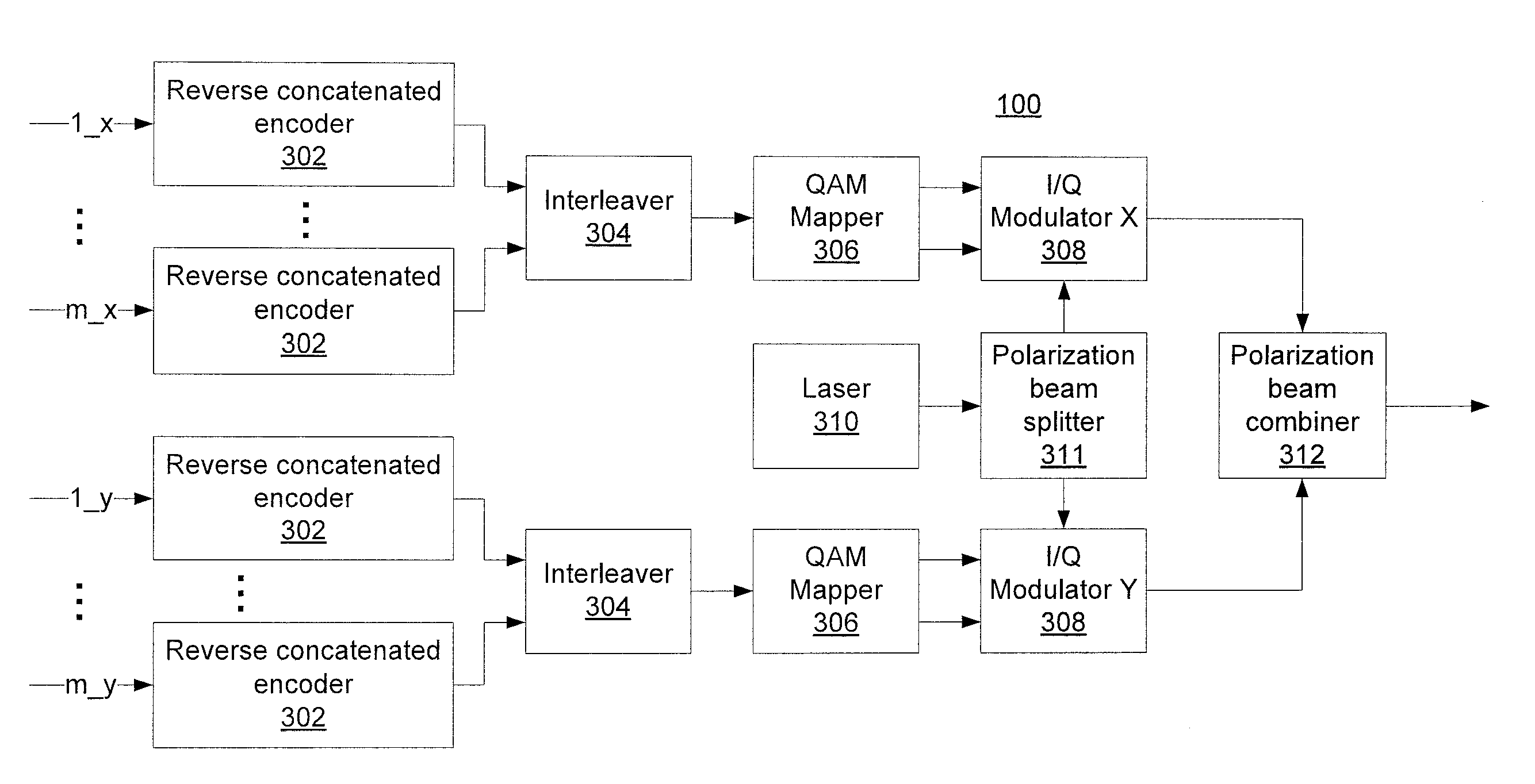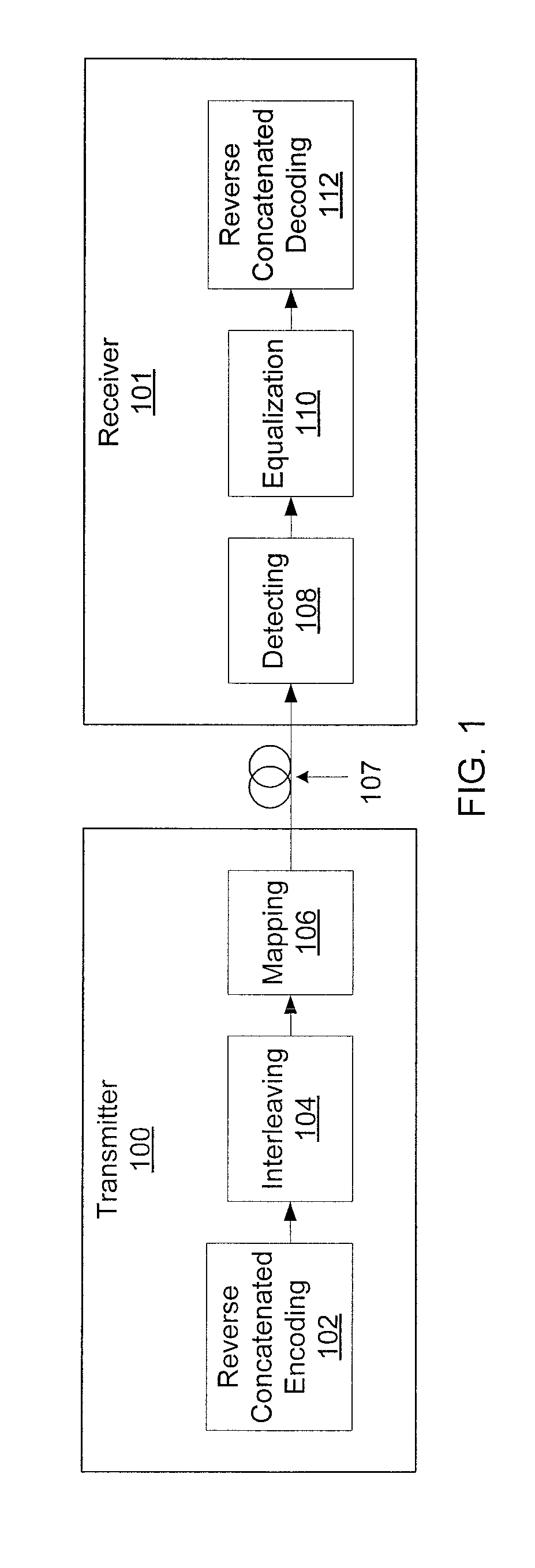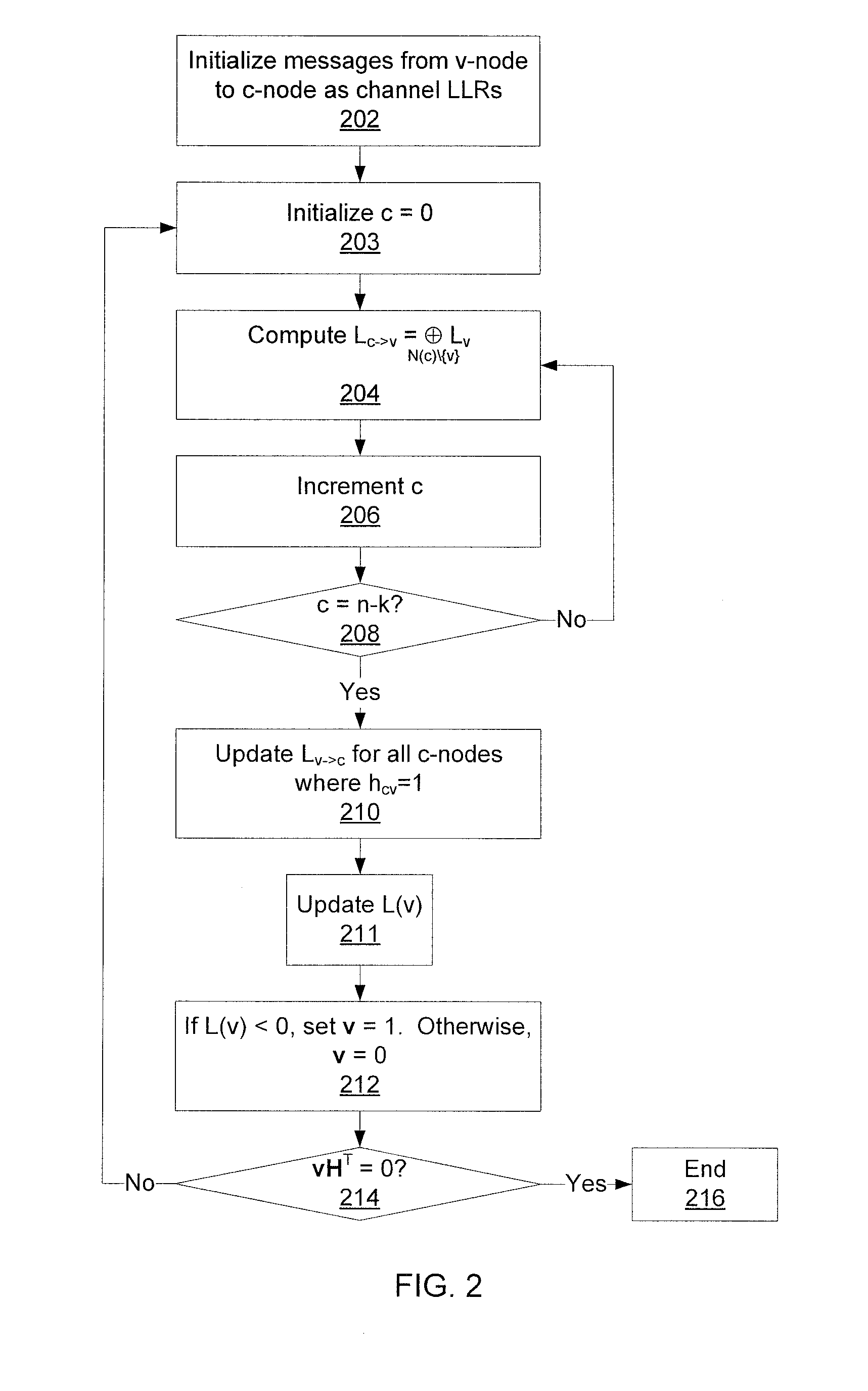Reverse concatenated encoding and decoding
a reverse concatenation and encoding technology, applied in the field of forward error correction (fec) for highspeed serial optical transport, can solve problems such as the increasing sensitiveness of transmission to errors, and achieve the effect of improving decoding performan
- Summary
- Abstract
- Description
- Claims
- Application Information
AI Technical Summary
Benefits of technology
Problems solved by technology
Method used
Image
Examples
Embodiment Construction
[0020]Through the use of concatenated codes, target net coding gains can be achieved even with reasonably short low-density parity-check (LDPC) codes of low girth (e.g., girth of 6 or 8). However, short LDPC codes of low girth and reasonable LDPC decoder complexity (having, e.g., column weight 3 in a min-sum-with-correction-term decoder) exhibit error floors in the region of interest for optical communications. Using a girth 6 LDPC code as an inner code and a Reed-Soloman code as an outer code, the error floor may be eliminated, but the net coding gain is far below that of large-girth LDPC codes.
[0021]To achieve the bit error rate (BER) performance of large-girth LDPC codes using reasonably short concatenated codes, the present principles make use of an LDPC code as an outer code and, e.g., a Reed-Muller (RM) or Hocquenghem, Bose, Ray-Chaudhuri (BCH) code as an outer code. Because BCH and RM codes can be efficiently decoded using maximum a posteriori (MAP) probability, the reliable ...
PUM
 Login to View More
Login to View More Abstract
Description
Claims
Application Information
 Login to View More
Login to View More - R&D
- Intellectual Property
- Life Sciences
- Materials
- Tech Scout
- Unparalleled Data Quality
- Higher Quality Content
- 60% Fewer Hallucinations
Browse by: Latest US Patents, China's latest patents, Technical Efficacy Thesaurus, Application Domain, Technology Topic, Popular Technical Reports.
© 2025 PatSnap. All rights reserved.Legal|Privacy policy|Modern Slavery Act Transparency Statement|Sitemap|About US| Contact US: help@patsnap.com



